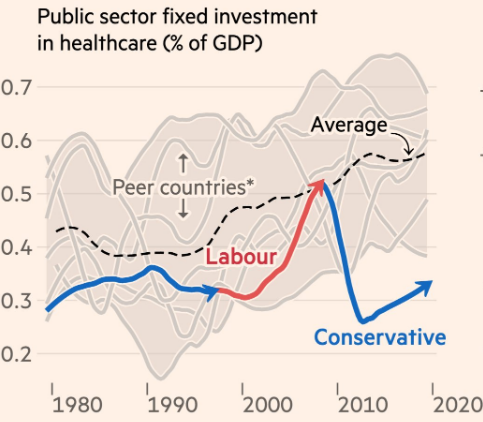The Financial Times looks into why the UK’s NHS is in such a disastrous condition at present. It turns out it’s not all that complicated to understand.
- There are currently lots of ill people - a new wave of Covid-19 is once more sweeping the nation, and the flu (amongst other infectious diseases) is also surging. A real twindemic.
- We don’t have enough hospital beds. This is partly because we haven’t built enough capacity in the first place. But also because the lack of anywhere to discharge patients who still need some amount of social care (but not hospital-level care) to means that thousands of people are unnecessarily stuck in hospital.
- There are not enough staff. All parts of the workforce have staff shortages. Those that are there are exhausted, demoralized and in recent times are occasionally on strike or leaving for better opportunities elsewhere. To be clear, these problems started way before the current spate of strikes were on the agenda.
- There has not been enough investment. This is nothing new, it’s been going on for at least a decade. NHS demand is constantly rising at present, so funding needs to rise substantially beyond inflation just to maintain performance. This hasn’t happened for at least a decade. The UK has amongst the lowest healthcare capital spending as % of GDP of it’s peer countries, leaving us with fewer beds, MRI scanners, CT scanners and so on. The chart below, also from the FT, may provide a clue as to why.
